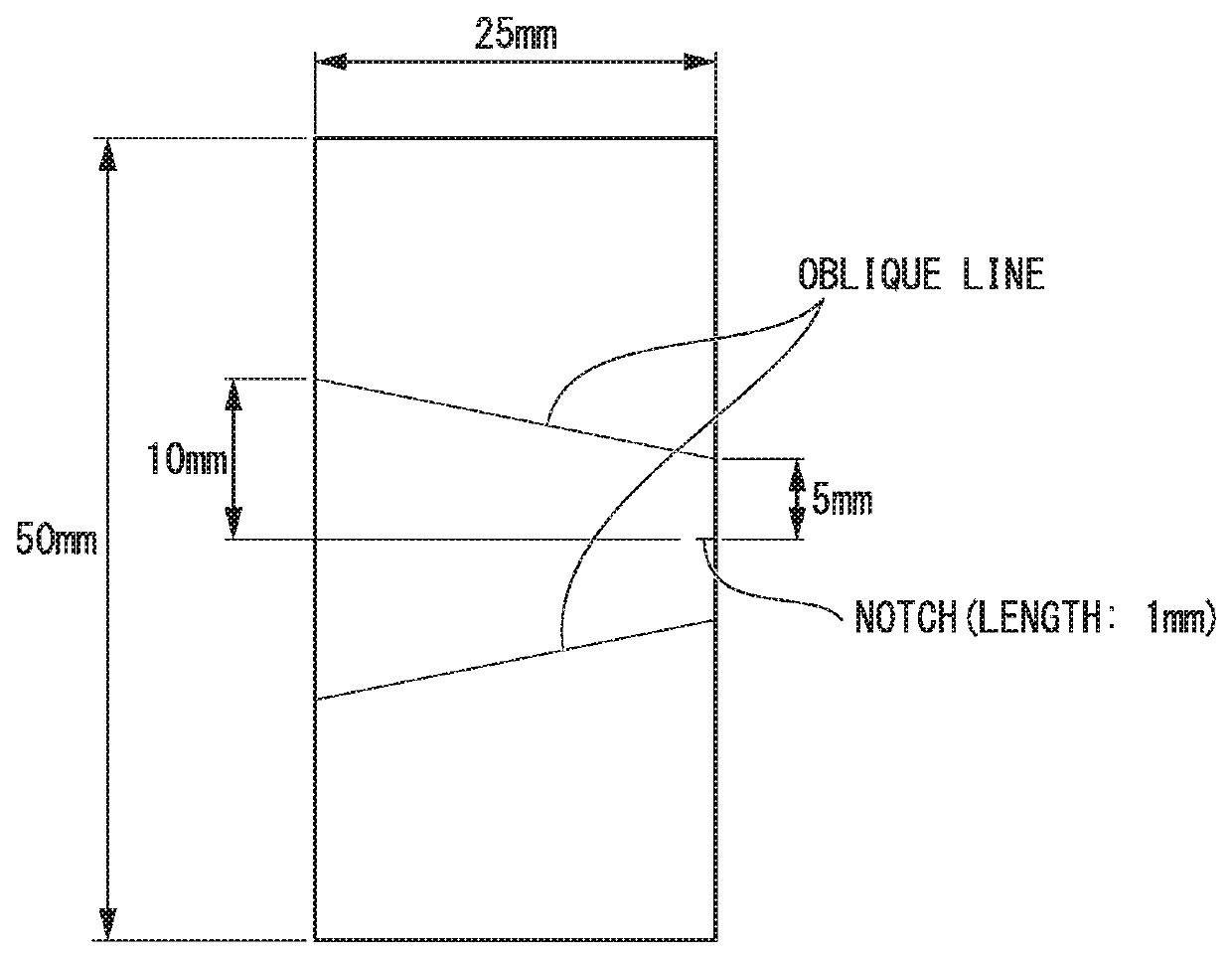Porous sheet
a technology of porous sheet and secondary batteries, which is applied in the field of porous sheet, can solve the problems of increasing inner resistivity, cost of secondary batteries used in vehicles, and inability to identify the cause of thermal runaway, etc., and achieves excellent performance, excellent strength, and high tear strength.
- Summary
- Abstract
- Description
- Claims
- Application Information
AI Technical Summary
Benefits of technology
Problems solved by technology
Method used
Image
Examples
example 1
[0148]NBKP was dispersed in ion-exchanged water so as to have a concentration of 3% by weight. The dispersion was subjected to a refining treatment by cycling under the conditions so that the number average fiber length was 1.0 mm or less, by means of a double disk refiner. The dispersion of the cellulose fibers in which the number average fiber length was 1.0 mm or less was treated ten times by means of a high-pressure homogenizer (manufactured as LAB-1000) under the condition of 800 bar. Thereby, a raw material of microfibrillated cellulose fibers was obtained. The aforementioned raw material was subjected to a treatment using a dehydration machine to have a concentration of about 10% by weight. The raw material of the cellulose fibers was mixed with the equal amount of triethylene glycol butyl methyl ether, and the mixture was dried in an oven at 120° C. to remove the solvent. Subsequently, the average fiber diameter of the fibers was measured by means of an electron microscope. ...
example 2
[0153]A coating material was prepared in the same manner as that described in Example 1, with the exception that the mixing weight ratio (based on fibers) of slurry 1 and slurry 2 was 70:30 so that the blending ratio of the cut fibers was 30% by weight based on the total amount of the cellulose fibers and the cut fibers. The coating material was applied on a PET film by means of an applicator so that a thickness of the WET film was 0.30 mm, and subsequently dried with hot air at 120° C. and an infrared heater for 12 minutes. The resulting coating film was separated from the PET film in toluene, and subsequently, the toluene was evaporated therefrom. Thereby, a porous sheet in the form of a cellulose-based fine porous film having a film thickness of 17 μm and a basis weight of 5.2 g / m2 was obtained.
example 3
[0154]A coating material was prepared in the same manner as that described in Example 1, with the exception that the mixing weight ratio (based on fibers) of slurry 1 and slurry 2 was 30:70 so that the blending ratio of the cut fibers was 70% by weight based on the total amount of the cellulose fibers and the cut fibers. The coating material was applied on a PET film by means of an applicator so that a thickness of the WET film was 0.30 mm, and subsequently dried with hot air at 120° C. and an infrared heater for 12 minutes. The resulting coating film was separated from the PET film in toluene, and subsequently, the toluene was evaporated therefrom. Thereby, a porous sheet in the form of an unwoven fabric having a film thickness of 18 μm and a basis weight of 5.0 g / m2 was obtained.
PUM
| Property | Measurement | Unit |
|---|---|---|
| diameter | aaaaa | aaaaa |
| diameter | aaaaa | aaaaa |
| diameter | aaaaa | aaaaa |
Abstract
Description
Claims
Application Information
 Login to View More
Login to View More - R&D
- Intellectual Property
- Life Sciences
- Materials
- Tech Scout
- Unparalleled Data Quality
- Higher Quality Content
- 60% Fewer Hallucinations
Browse by: Latest US Patents, China's latest patents, Technical Efficacy Thesaurus, Application Domain, Technology Topic, Popular Technical Reports.
© 2025 PatSnap. All rights reserved.Legal|Privacy policy|Modern Slavery Act Transparency Statement|Sitemap|About US| Contact US: help@patsnap.com

